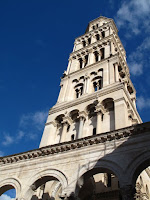
Today’s activity was supposed to be a steam train ride to York and back but this was cancelled during the week due to the steam engine being faulty.
We had seen a news item about the Great River Race where 300 or so crews row up the River Thames from the Docklands to Richmond, some 21 exhausting miles. A civilised way to participate in such madness is to book a table in a riverside pub (in our case the Dove), enjoy a great meal washed down with a NZ Sauvignon Blanc and wait for the crews make it to your viewpoint then find a nearby bridge (in our case Hammersmith) to stand on and cheer the crews on.


The overcast conditions and chill wind when the boats arrived detracted a little from the enjoyment of the day but at least we were warm and dry and did not wake the next morning with aching muscles.


The race has been run since 1988 and is based on a handicap start with the slowest boats starting first and, in honour of the Thames Waterman tradition, each boat has to carry a passenger over the distance of the course. The boats range in size and style: row boats, dragon boats, outrigger canoes, Irish longboats, lifeboats, surf boats and even one made from oil drums, the only common factor being oars or paddles as the motive power.





















































